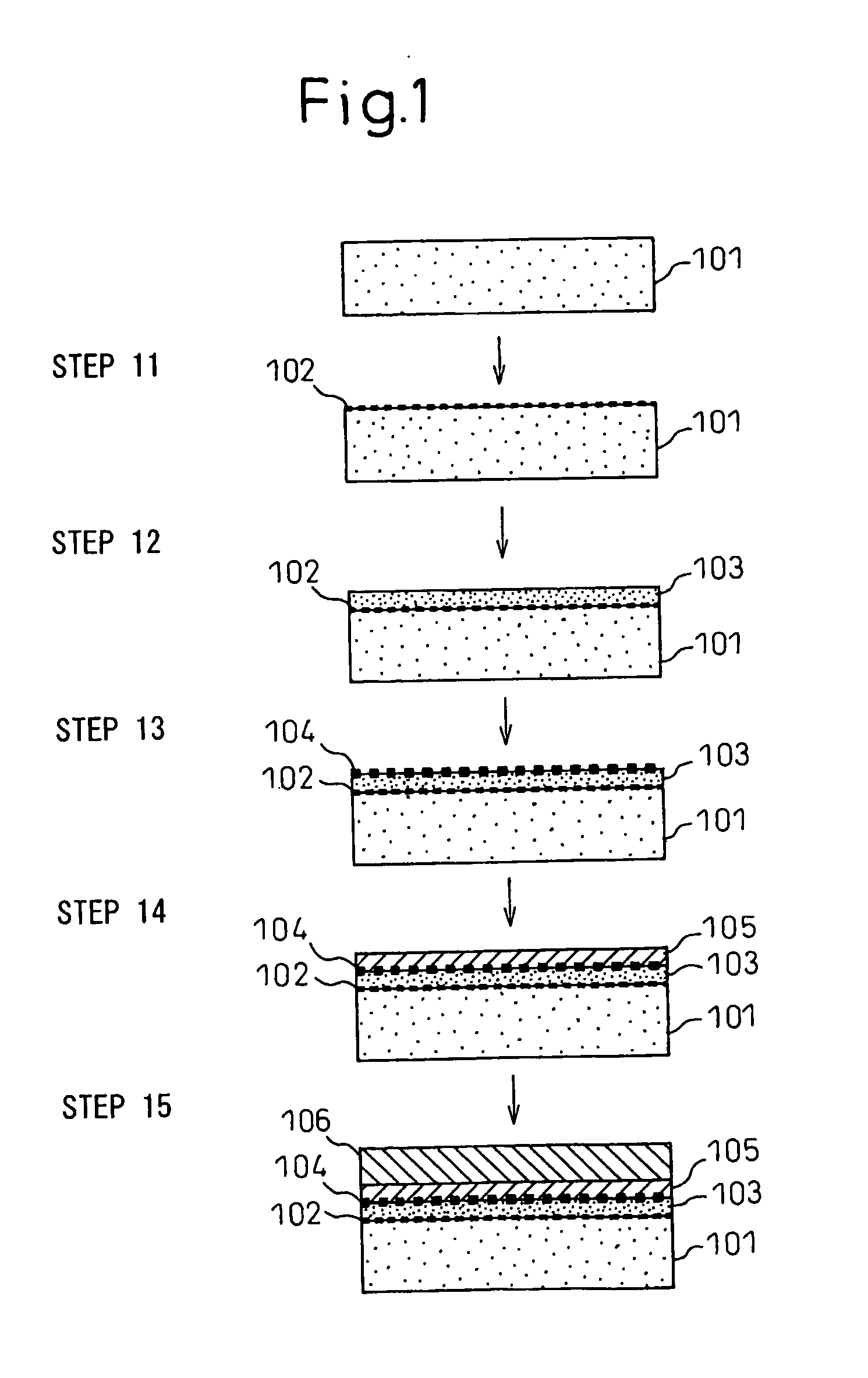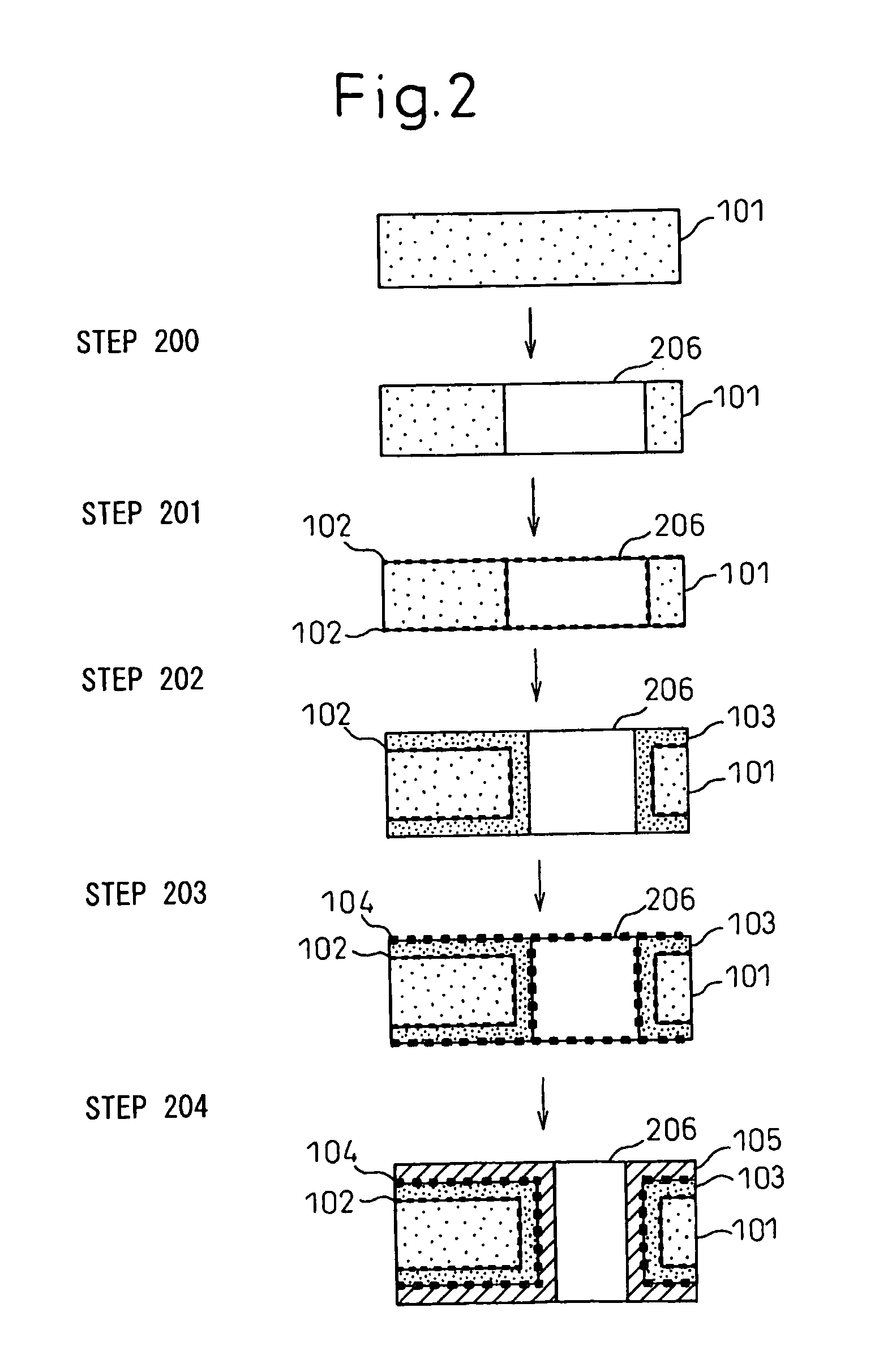Polyimide-Metal Laminated Body and Polyimide Circuit Board
a technology of polyimide metal and laminated body, which is applied in the direction of insulating substrate metal adhesion improvement, electric connection formation of printed elements, transportation and packaging, etc., can solve the problems of complex manufacturing steps which are combined in a vapor deposition process and wet process in this method, and achieve satisfactory electrical insulating reliability and cohesion. , the effect of satisfactory cohesion
- Summary
- Abstract
- Description
- Claims
- Application Information
AI Technical Summary
Benefits of technology
Problems solved by technology
Method used
Image
Examples
reference example 1
[0054]Fabrication of polyimide film ceramic-modified or pseudoceramic-modified on at least the surface.
[0055]In a 300 ml glass reactor equipped with a stirrer, nitrogen introduction tube and circulation tube there were added 183 g of N,N-dimethylacetamide and 0.1 g of a phosphorus compound (SEPARU 365-100, product of Chukyo Yushi Co., Ltd.), and after further addition of 10.81 g (0.1000 mole) of paraphenylenediamine while stirring under a nitrogen stream, the reactants were heated to 50° C. to complete dissolution. After slowly adding 29.229 g (0.9935 mole) of 3,3′,4,4′-biphenyltetracarboxylic dianhydride while noting the heat release, reaction was continued for 5 hours while maintaining a temperature of 50° C. Next, 0.2381 g (0.00065 mole) of 3,3′,4,4′-biphenyltetracarboxylic dianhydride was dissolved therein. The obtained polyamic acid solution was a brown viscous solution having a solution viscosity of about 1500 poise at 25° C. The thermal expansion coefficient was 15×10−6 cm / cm...
reference example 2
[0057]A polyimide film with a thickness of 25 μm and a silica-modified surface was formed according to the method of Reference Example 1, except that silica gel (a dimethylacetamide solution containing 20 wt % of a silica sol component with a mean particle size of 30 nm, product of Nissan Chemical Industries, Ltd.) and a silane coupling agent (KBM-903, product of Shin-Etsu Chemical Co., Ltd.) were used instead of the aluminum-based coating solution in Reference Example 1, to prepare a dimethylacetamide solution comprising 2.5 wt % of the silica sol component and 0.5 wt % of the silane coupling component, as a coating solution.
example 1
[0058]A ground layer and electroless copper plating layer were accumulated on the polyimide film with a thickness of 25 μm obtained in Reference Example 1 by the plating process shown in Table 1 (“Zintra” process by C. Uyemura & Co., Ltd.). Also, electrolytic copper plating was carried out in a copper sulfate-based electrolytic plating solution for 30 minutes at a current density of 3 A / dm2, and then heat treatment was carried out in a 200° C. oven for 30 minutes to obtain a polyimide copper laminated body with a copper thickness of 10 μm. The results of measuring the 900 peel strength of the obtained polyimide copper laminated body are shown together with the comparative examples in Table 2.
[0059]The results of measuring the 90° peel strength after prolonged aging in an oven with a 150° C. atmosphere are shown in FIG. 5. No deterioration in peel strength was seen even after elapse of 168 hours.
[0060]The obtained laminated body was also used to form a 40 μm pitch comb-shaped electro...
PUM
| Property | Measurement | Unit |
|---|---|---|
| RH | aaaaa | aaaaa |
| bias voltage | aaaaa | aaaaa |
| temperature | aaaaa | aaaaa |
Abstract
Description
Claims
Application Information
 Login to View More
Login to View More - R&D
- Intellectual Property
- Life Sciences
- Materials
- Tech Scout
- Unparalleled Data Quality
- Higher Quality Content
- 60% Fewer Hallucinations
Browse by: Latest US Patents, China's latest patents, Technical Efficacy Thesaurus, Application Domain, Technology Topic, Popular Technical Reports.
© 2025 PatSnap. All rights reserved.Legal|Privacy policy|Modern Slavery Act Transparency Statement|Sitemap|About US| Contact US: help@patsnap.com



